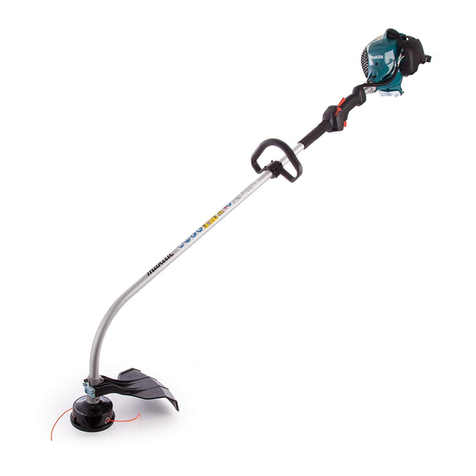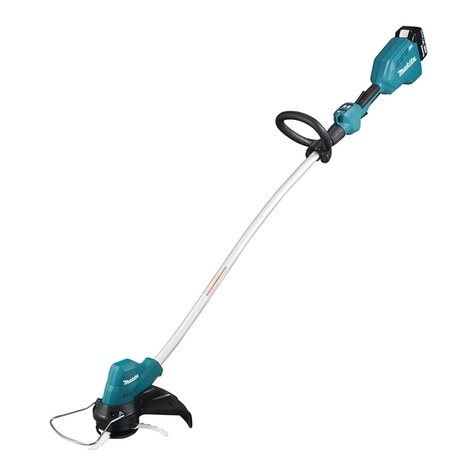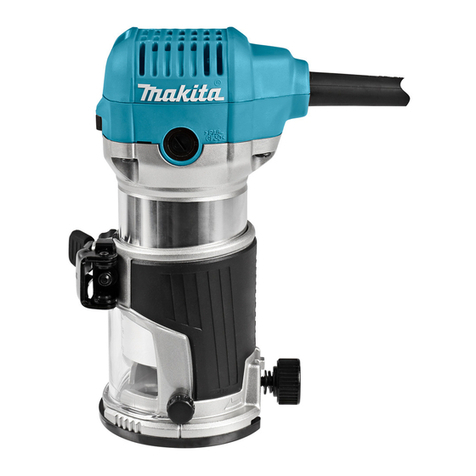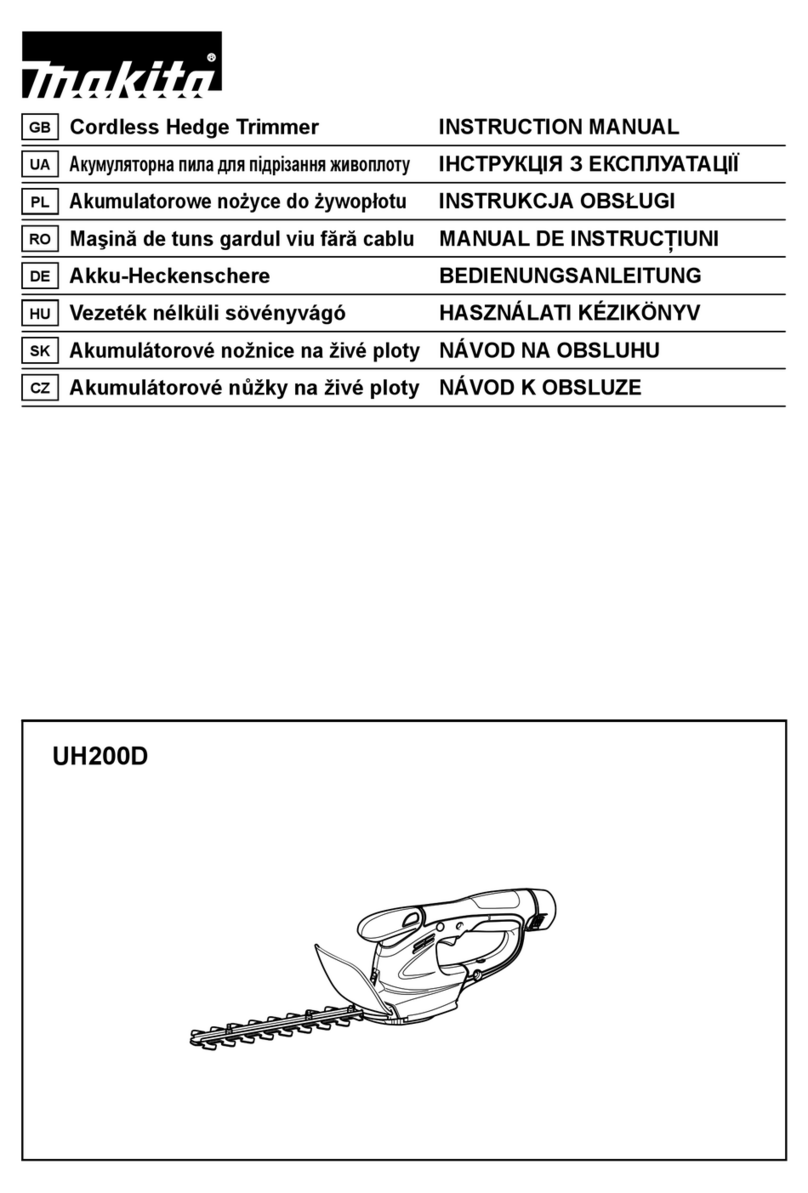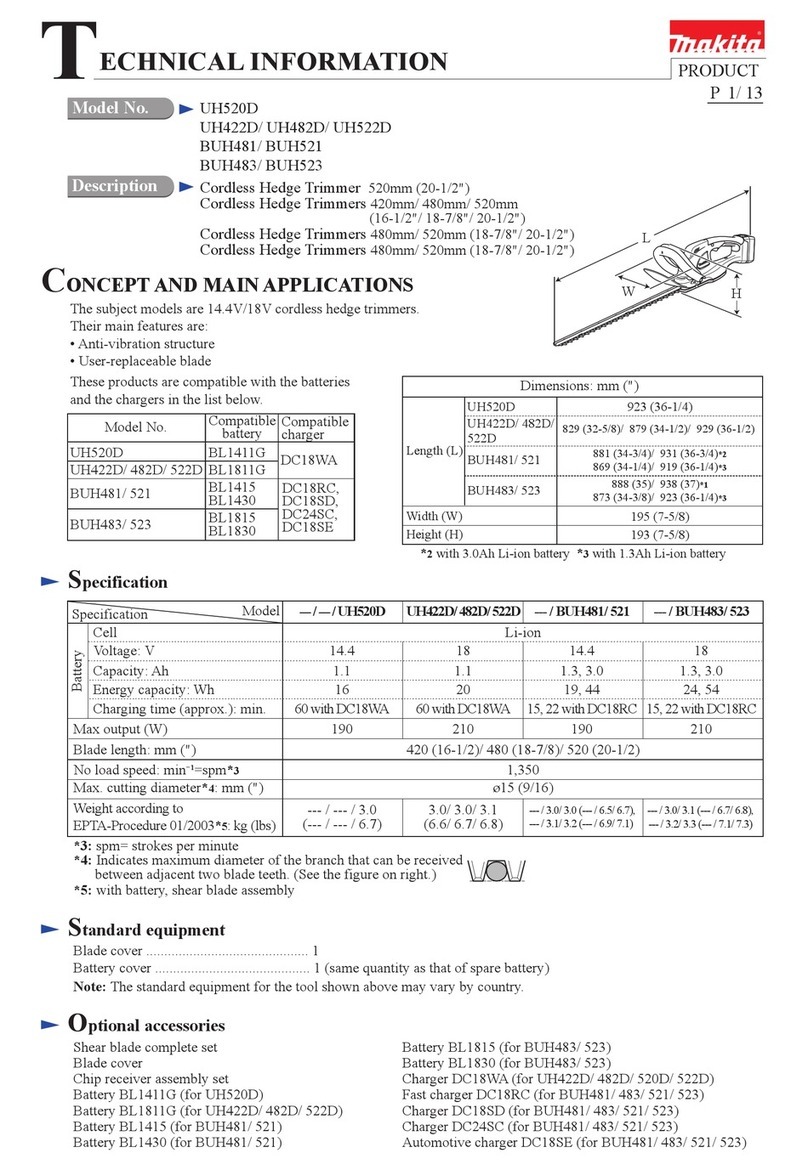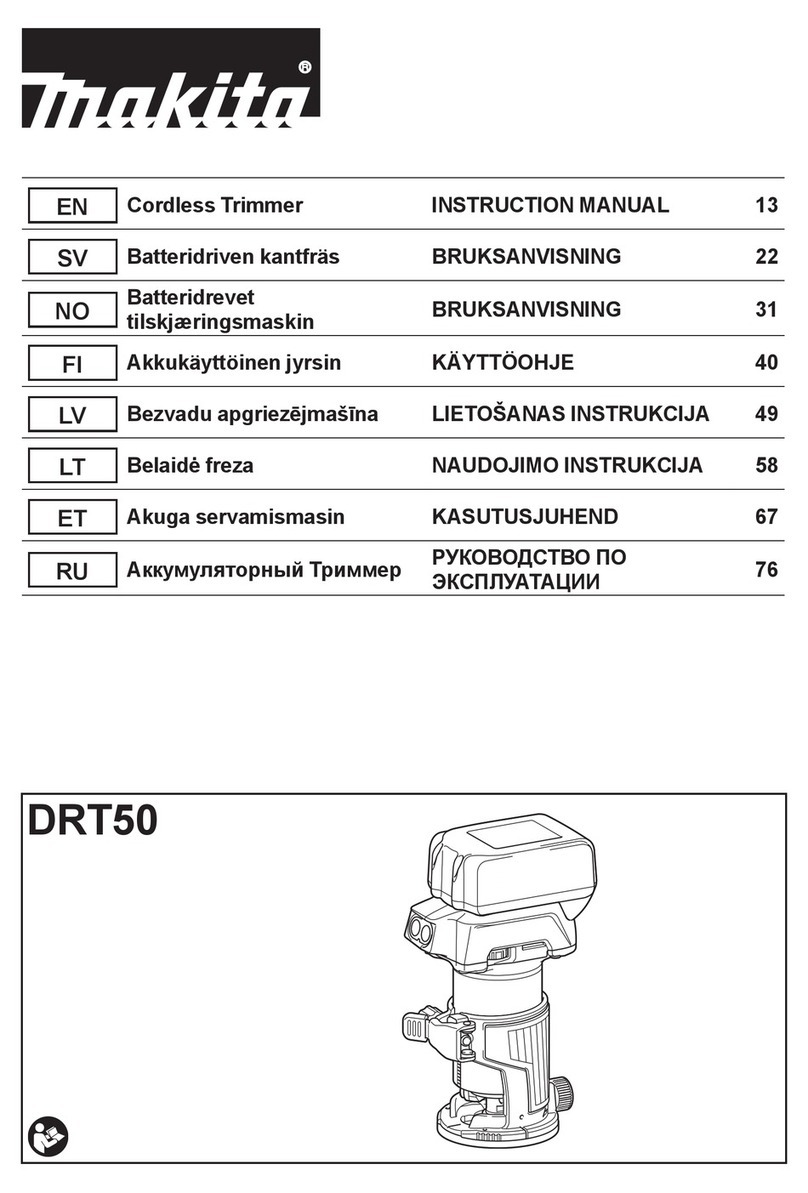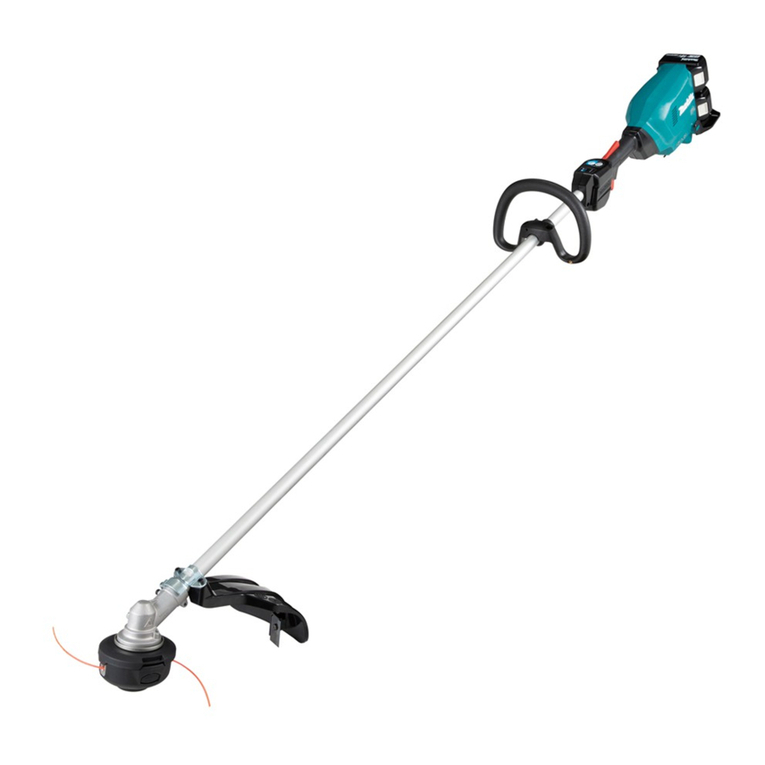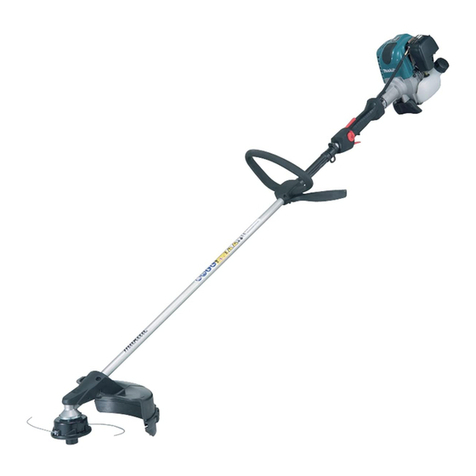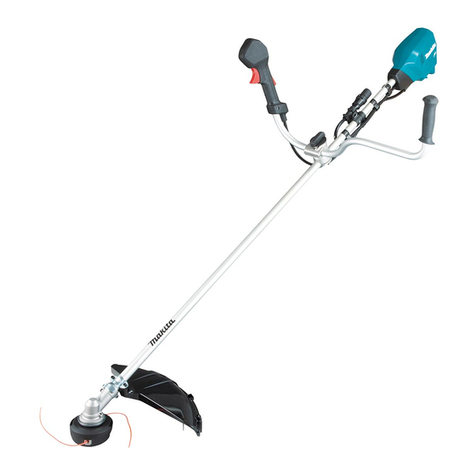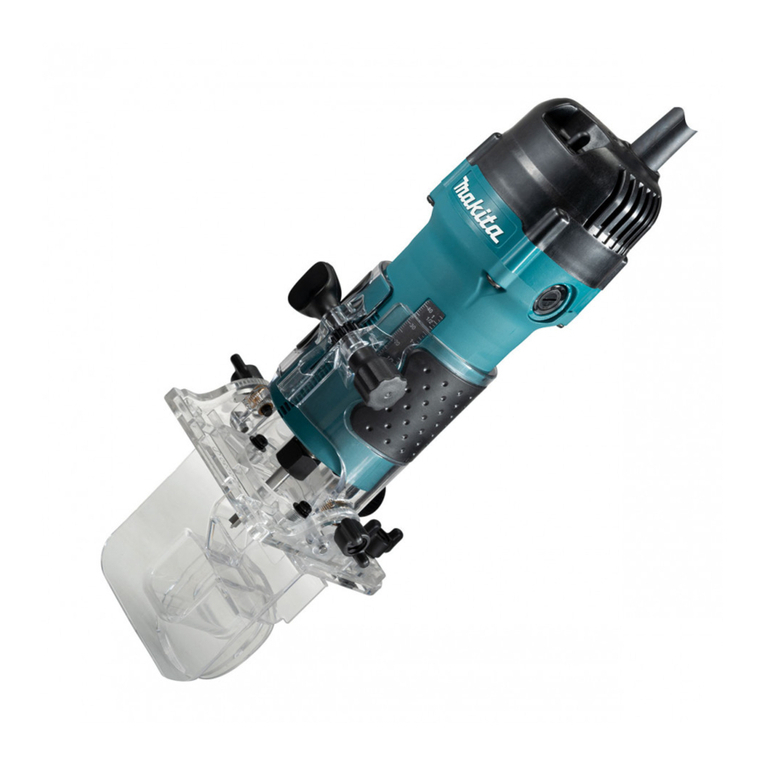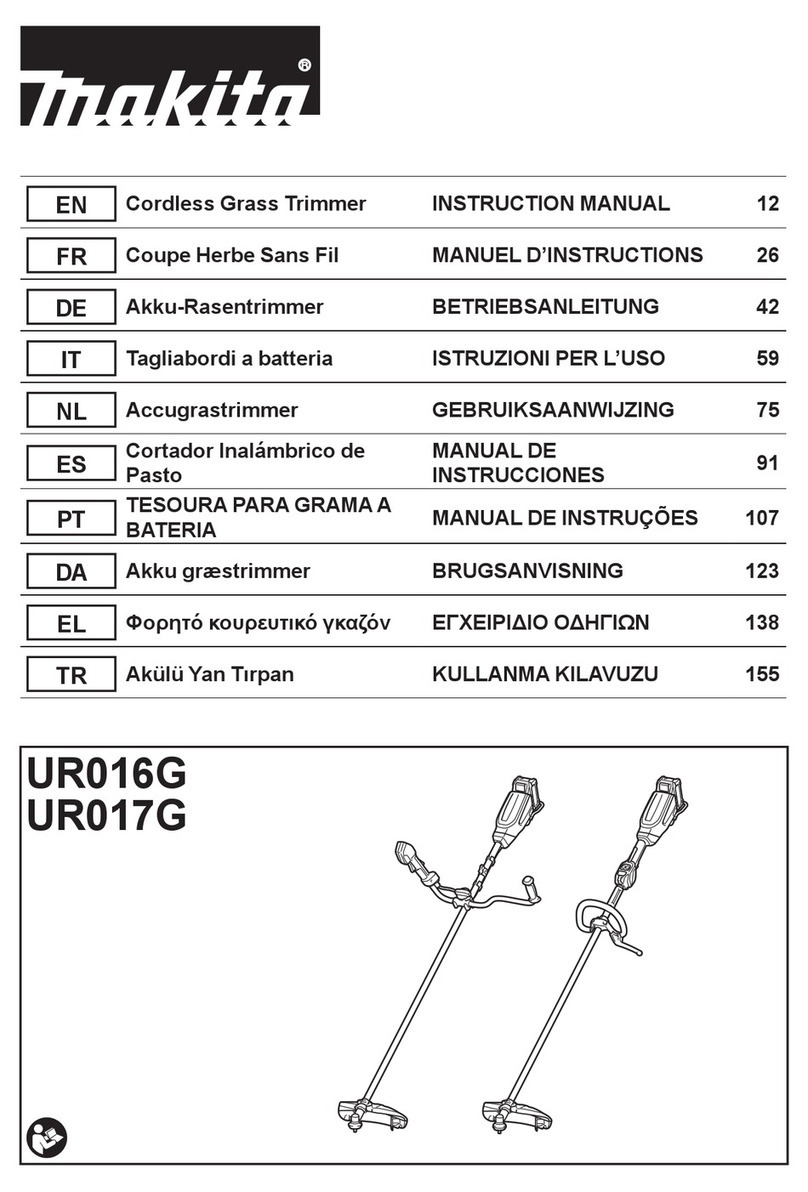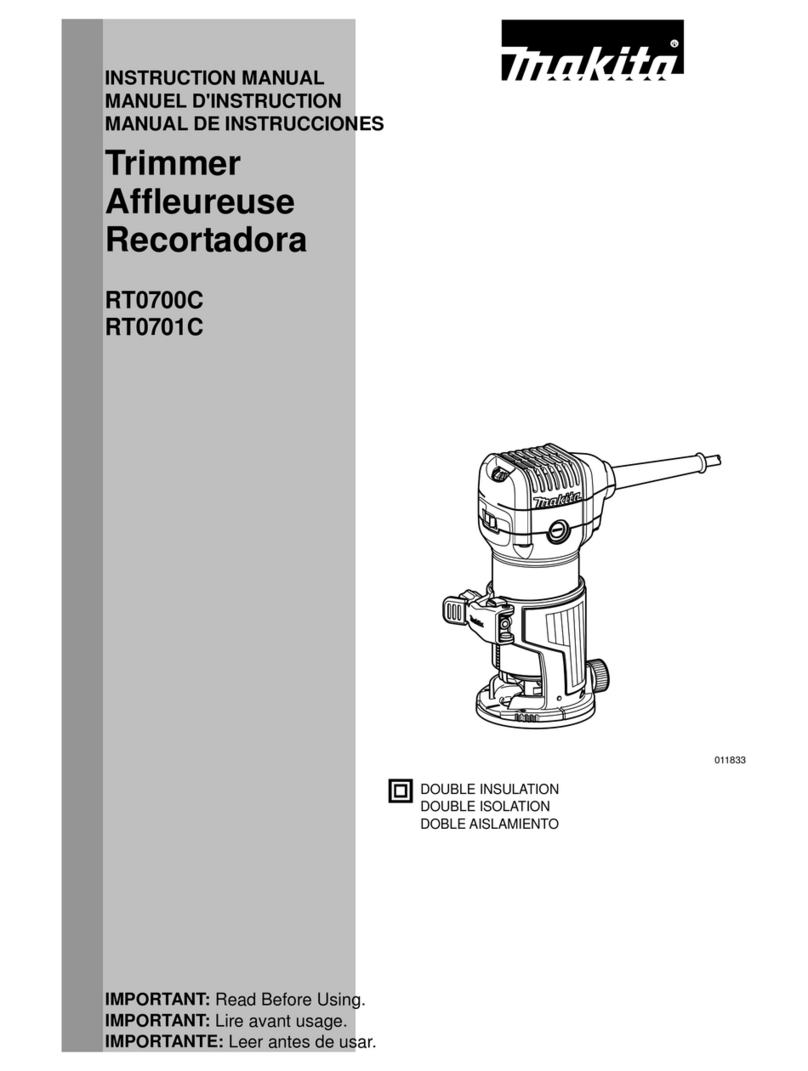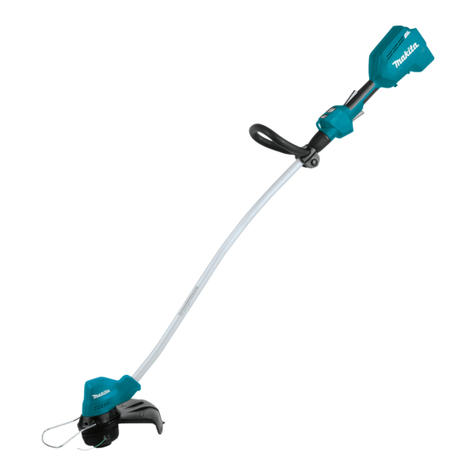
10 ENGLISH
3. When transporting or storing the hedge trim-
Proper handling
of the hedge trimmer will decrease the risk of
4.
When clearing jammed material or servicing the unit,
pack is removed or disconnected. Unexpected actua-
5.
Hold the hedge trimmer by insulated gripping
surfaces only, because the blade may contact
hidden wiring.
make exposed metal parts of the hedge trimmer
"live" and could give the operator an electric shock.
6.
Keep all power cords and cables away from cutting
area.
7.
Do not use the hedge trimmer in bad weather con-
ditions, especially when there is a risk of lightning.
Additional Safety Instructions
Preparation
1. Check the hedges and bushes for foreign
objects, such as wire fences or hidden wiring
before operating the tool.
2. The tool must not be used by children or
young persons under 18 years of age. Young
under the supervision of an expert.
3. First-time users should have an experienced
user show them how to use the tool.
4.
Use the tool only if you are in good physical
condition.
-
5.
alcohol, drugs or medication.
6. Work gloves of stout leather are part of the
basic equipment of the tool and must always
be worn when working with it. Also wear
sturdy shoes with anti-skid soles.
7. Before starting work check to make sure that
the tool is in good and safe working order.
must not be used unless fully assembled.
Operation
1.
2. The tool is intended to be used by the operator
at ground level. Do not use the tool on ladders
or any other unstable support.
3.
DANGER - Keep hands away from blade. Contact
4. Make sure you have a secure footing before
starting operation.
5.
Do not operate the tool at no-load unnecessarily.
6.
battery cartridge if the shear blades should
come into contact with a fence or other hard
object. Check the blades for damage, and if
damaged, replace the blades immediately.
7. Before checking the shear blades, taking care
of faults, or removing material caught in the
remove the battery cartridge.
8.
Never point the shear blades to yourself or others.
9. If the blades stop moving due to the stuck of
foreign objects between the blades during
battery cartridge, and then remove the foreign
objects using tools such as pliers. Removing
-
10.
When you use the tool on muddy ground, wet slope,
or slippery place, pay attention to your footing.
11. Do not submerge the tool into a puddle.
12.
Do not leave the tool unattended outdoors in the rain.
Electrical and battery safety
1.
Avoid dangerous environment. Don't use the tool
in dump or wet locations or expose it to rain. Water
entering the tool will increase the risk of electric shock.
2.
3.
Do not open or mutilate the battery(ies). Released
4.
Do not charge battery in rain, or in wet locations.
5. Do not charge the battery outdoors.
6. Do not handle charger, including charger plug,
and charger terminals with wet hands.
7. Do not replace the battery with wet hands.
8. Do not replace the battery in the rain.
9. Do not wet the terminal of battery with liquid
such as water, or submerge the battery. Do not
leave the battery in the rain, nor charge, use,
or store the battery in a damp or wet place. If
-
10. After removing the battery from the tool or
charger, be sure to attach the battery cover to
the battery and store it in a dry place.
11. If the battery cartridge gets wet, drain the
water inside and then wipe it with a dry cloth.
Dry the battery cartridge completely in a dry
place before use.
Maintenance and storage
1.
cartridge before doing any maintenance work.
2. When moving the tool to another location,
including during work, always remove the
battery cartridge and put the blade cover on
the shear blades. Never carry or transport the
tool with the blades running. Never grasp the
blades with your hands.
3. Clean the tool and especially the shear blades
after use, and before putting the tool into stor-
age for extended periods. Lightly oil the blades
and put on the blade cover.
4. Store the tool with the blade cover on, in a dry
room. Keep it out of reach of children. Never
store the tool outdoors.

